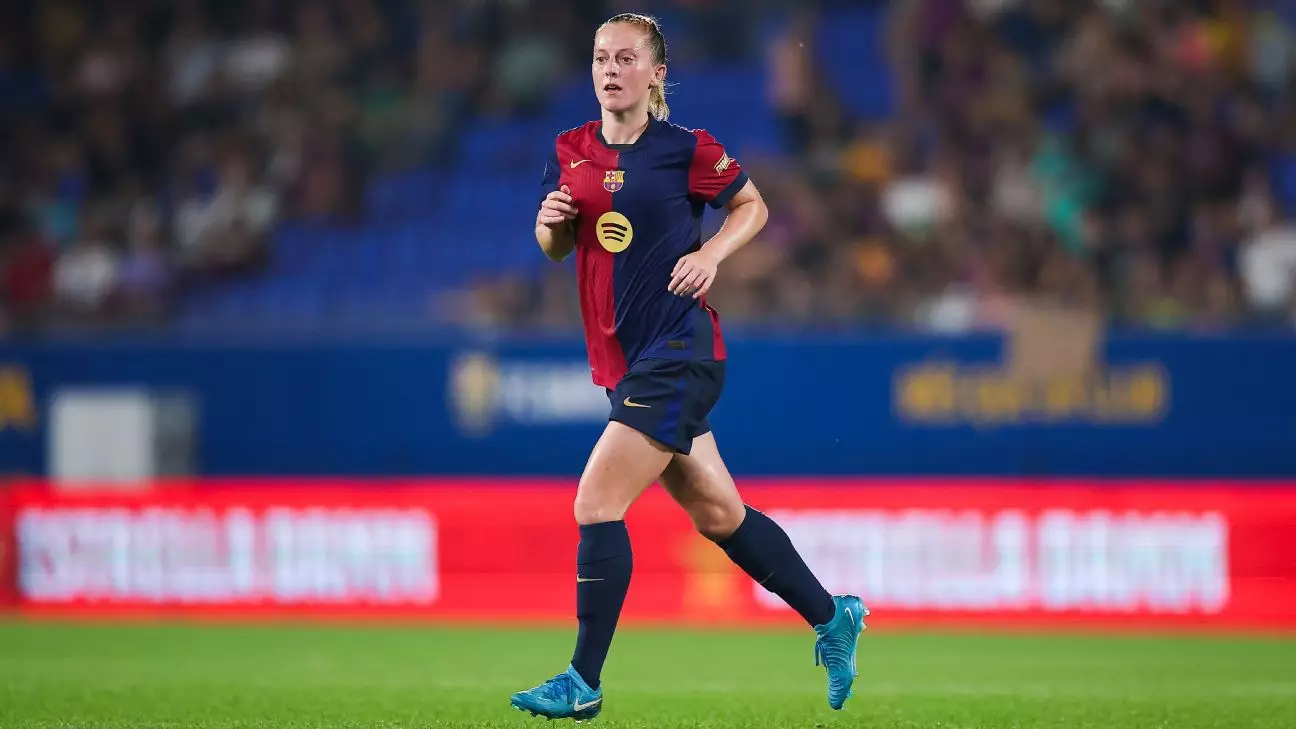In a recent turn of events surrounding the Women’s Super League (WSL), FC Barcelona made headlines by rejecting a significant transfer offer for England international Keira Walsh. This decision highlights the club’s commitment to maintaining its core squad despite market pressures and interest from other teams, primarily from the WSL. The situation presents a fascinating case study in player retention strategies, competitive dynamics in women’s football, and the implications of transfer market fluctuations.
As confirmed by several sources associated with ESPN, Barcelona declined an enticing bid reported to be around €1.1 million (approximately $1.2 million). This offer would have shattered existing transfer records for women’s football, which currently stands at €800,000 following Racheal Kundananji’s transfer to Bay FC from Madrid CFF. The firm stance by Barcelona’s management indicates a broader strategy to protect essential players, particularly those who have contributed significantly to the club’s recent successes, including back-to-back titles.
While the allure of a substantial financial offer might sway some clubs, Barcelona’s decision illustrates their ambition not just to win locally but to retain a competitive edge on the European stage. This is particularly vital considering Walsh’s instrumental role since her record-breaking arrival from Manchester City. Moreover, by making it clear that Walsh’s release clause stands firmly at €3 million, the club is signaling its unwillingness to compromise on talent for financial gain.
Interestingly, Walsh’s current contract situation adds a layer of complexity to the negotiations. Although she joined Barcelona for a then-world record fee of €400,000 just a year ago, her contract is set to expire at the end of the current season. Speculation surrounding her potential return to England creates an intriguing narrative for fans and analysts alike. Reports suggest that Walsh would be open to considering options in her home country, a situation that gives Arsenal and Chelsea leverage as they aim for her signature in the near future.
This ongoing scenario underscores the evolving nature of women’s football, wherein players wield considerable influence over their career trajectories. The growing recognition of the sport has led clubs to invest heavily in talent and has also put players at the heart of market negotiations. However, as Walsh’s case shows, clubs like Barcelona are willing to take risks by maintaining stability and continuity in a squad that performed remarkably well in the previous season.
Following Barcelona’s 3-1 victory over Real Sociedad – Walsh’s strong performance in that match further reaffirms her status as a pivotal player for the Catalan club. Coach Pere Romeu’s comments post-match reiterated the trust and importance the team places on Walsh. He lauded her professionalism and seamless integration into the team over the preseason, characterizing her as an asset indispensable to their strategic objectives.
In light of a competitive season ahead, Barcelona’s investment in solidifying its core team is crucial. The team’s emphasis on not weakening their squad after a year of remarkable achievements points toward a long-term vision for sustaining success both domestically and in European competitions. It raises a question: will they remain resilient in the face of future economic offers, and can they convince Walsh to extend her contract to secure their midfield stronghold?
The competitive landscape is also shifting significantly, as evidenced by the other transfers occurring within the WSL. The recent signing of María Pérez by London City Lionesses, a team aspiring for promotion, alongside other notable acquisitions, demonstrates the growing ambition among lower-tier clubs to invest in talent. Such developments could lead to an increasingly intense competition for top players, amplifying the stakes for clubs like Barcelona that are bidding to retain their stars.
Barcelona’s decision to turn down a lucrative offer for Keira Walsh underscores its commitment to maintaining a strong and competitive team. It raises implications for the transfer dynamics in women’s football, where the balance between financial incentives and player loyalty is continually evolving. With the potential for future departures looming, how Barcelona navigates this intricate landscape will undoubtedly be pivotal in determining its trajectory in women’s football for years to come.


Leave a Reply